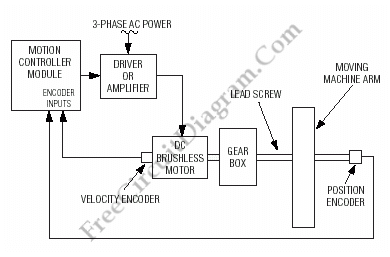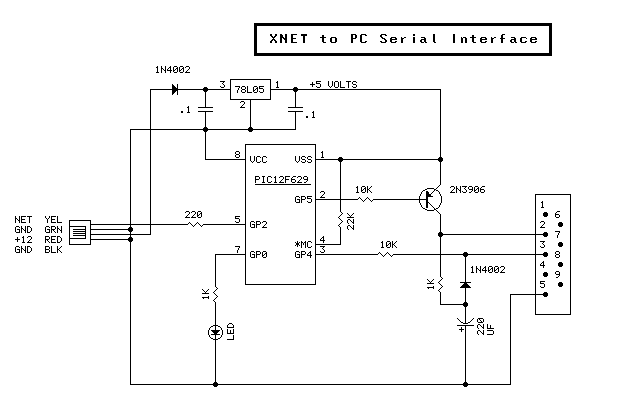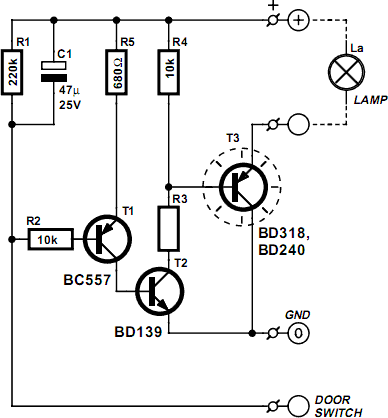
DMX Lighting System

The momentary switch utilized has a safety rating of 10A. If a switch is rated for a current that is too low, the instantaneous current during the first millisecond could cause the switch contacts to fuse together. To achieve the desired functionality, a switch capable of varying current is necessary. Possible options include a potentiometer, pulse width modulation, or a triac circuit (commonly used in light dimmers). In the schematic diagram, the light dimmer is represented by the potentiometer. However, a drawback of this circuit is the absence of an on/off switch. To resolve this issue, an on/off switch has been placed in series with the dimmer.
The circuit design incorporates a momentary switch rated for 10A, ensuring safety during operation. This switch is crucial for preventing potential failure due to excessive current, which could cause the contacts to weld together if the switch's current rating is inadequate. To allow for current variation, the circuit incorporates a potentiometer, which functions as a dimmer, providing a means to adjust the brightness of a connected load, such as a lamp.
In this configuration, the potentiometer is effectively used to modulate the power delivered to the load by varying the resistance in the circuit. However, this setup lacks a dedicated on/off mechanism, which is typically essential for user convenience. To address this limitation, an on/off switch has been integrated into the circuit design. This switch is placed in series with the potentiometer dimmer, allowing the user to completely disconnect the load from the power source when not in use.
The overall schematic showcases the relationship between these components, with clear indications of how the momentary switch, potentiometer, and on/off switch interact to control the flow of current. The inclusion of these elements not only enhances functionality but also prioritizes safety and user control, ensuring that the circuit operates effectively under varying conditions while minimizing the risk of component damage.The momentary switch used was rated for 10A for safty. If the switch was rated for too small a current, the instantaneous current for the first millisecond would fuse the switch contacts together. To achieve objective 3, some sort of switch that can vary current must be used. The posibilities are potentiometer, pulse width modulation, or a triac circuit (light dimmer). The light dimmer is represented by the potentiometer in the schematic diagram. The only problem with this circuit is that there is no on/off switch any more. To incorporate an on/off switch, I have chose to place it in series with the dimmer (shown below). 🔗 External reference
The circuit design incorporates a momentary switch rated for 10A, ensuring safety during operation. This switch is crucial for preventing potential failure due to excessive current, which could cause the contacts to weld together if the switch's current rating is inadequate. To allow for current variation, the circuit incorporates a potentiometer, which functions as a dimmer, providing a means to adjust the brightness of a connected load, such as a lamp.
In this configuration, the potentiometer is effectively used to modulate the power delivered to the load by varying the resistance in the circuit. However, this setup lacks a dedicated on/off mechanism, which is typically essential for user convenience. To address this limitation, an on/off switch has been integrated into the circuit design. This switch is placed in series with the potentiometer dimmer, allowing the user to completely disconnect the load from the power source when not in use.
The overall schematic showcases the relationship between these components, with clear indications of how the momentary switch, potentiometer, and on/off switch interact to control the flow of current. The inclusion of these elements not only enhances functionality but also prioritizes safety and user control, ensuring that the circuit operates effectively under varying conditions while minimizing the risk of component damage.The momentary switch used was rated for 10A for safty. If the switch was rated for too small a current, the instantaneous current for the first millisecond would fuse the switch contacts together. To achieve objective 3, some sort of switch that can vary current must be used. The posibilities are potentiometer, pulse width modulation, or a triac circuit (light dimmer). The light dimmer is represented by the potentiometer in the schematic diagram. The only problem with this circuit is that there is no on/off switch any more. To incorporate an on/off switch, I have chose to place it in series with the dimmer (shown below). 🔗 External reference





